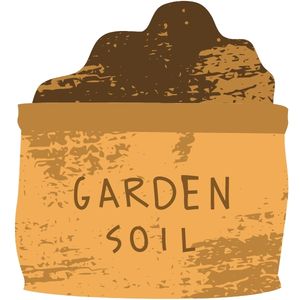
The soil that is present on a garden plot can’t be modified, just as we can’t change climatic conditions. If you are lucky enough, your garden could naturally have soil that is quite suitable for growing excellent crops, or could have been made so through careful cultivation in the past. Ideally, a suitable soil is well-drained, fertile loam 18 inches (45 cm) deep.
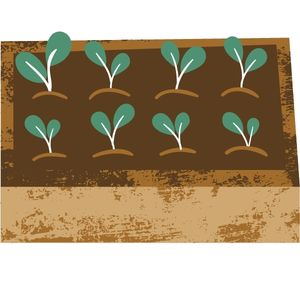
Unfortunately often, however, we have to deal with clay soils that are heavy, cold, poorly drained, OR light, sandy soils that dry out rapidly and quickly lose fertility. It is almost always possible to improve these less than ideal soils. Even in worst cases where this cannot be achieved, raised beds in kitchen gardens or containers can still be utilized to grow some fruits and vegetables.
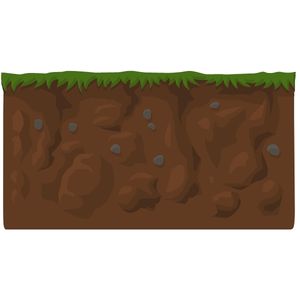
The soil is the foundation of plants, providing anchorage, water and nutrients. It varies widely from site to site, even among sites that are close to one another. Different soil types exhibit different physical characteristics, levels of organic matter, and depths.
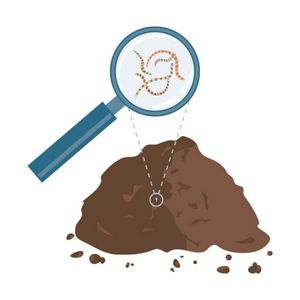
Soil is made up of weathered rock, rotted plant and animal remains and waste, which naturally support a variety of organisms, hence making the soil a living medium. These organic matter and soil fauna are responsible for the brown color of the surface layers of the soil.
Soil texture
Although gardeners do not need to learn soil science in depth to plant a kitchen garden or do container gardening, they should know how to identify the essential types of soil. This is because the types of soil differ in their properties, impacting plant growth and requiring different methods of cultivation and maintenance.
With a few exceptions, most herbs, spices, fruits and vegetables are able to thrive on a wide range of soil types. In general, there are five primary soil types based on soil texture : clay, silt, sand, chalk, and peat.
* A must read : Choosing the right potting mix for your container
CLAY SOIL
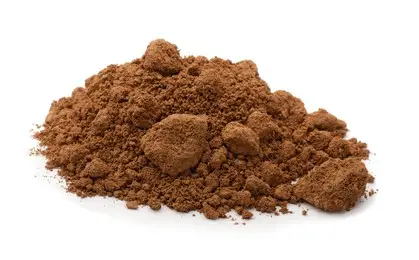
Clay particles are defined as those smaller than 0.002mm in size.
In spite of its heavy appearance and sometimes difficult nature, clay soil has many useful properties. Certain nutrients are naturally held tightly in clay as chemical combinations. This means they do not easily leach out of the soil and are instead available to plant roots over time.
Compared to sandy soil, clay soil is more water-retentive and binds together more firmly.
Some of the disadvantages of clay soil are: it is prone to waterlogging in winters, baking and cracking in summer and comparatively slower to worm. You can alleviate the problem by adding bulky manure.
Clay soils are very desirable in the kitchen garden in many regards, but the timing of cultivation must be carefully managed.
Clay is often good for growing black currants, plums, Brussels sprouts, and cabbages.
SILT SOIL
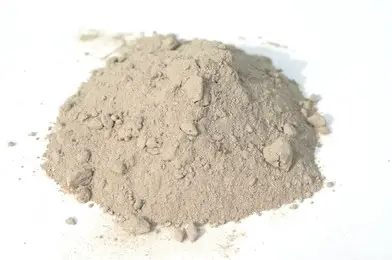


Silt is defined as particles with a size between 0.002mm and 0.05mm.
Silt soils are intermediate between sandy and clay soils. Silt soil is smooth or silky in texture. When it is dry, silty soil is prone to compaction, but it retains more nutrients and water than sandy soil.
Mixing an abundance of organic matter will make this soil ideal for those who want to sow early.
SANDY SOIL
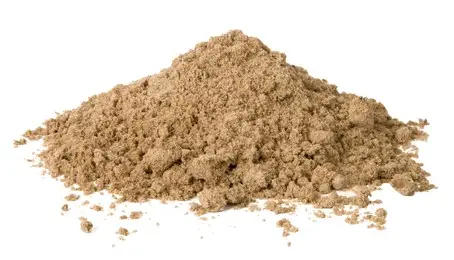

Sand is made up of particles ranging between 0.05 and 2.0 mm in size.
Typically, sandy soils are referred to as light soils. The soil does not hold together well, making it susceptible to erosion on exposed and sloping sites. Its open structure means that it does not retain water and nutrients well.
However, by incorporating bulky organic manures, these problems can be resolved.
A potential advantage of sandy soil is that it is relatively easy to cultivate on and that it warms up early. This is appropriate for strawberries, salad crops, young root crops, and legumes.
CHALKY SOIL



Some areas have a lot of chalky soil or limestone soil.
In general, chalky soil is shallow and well drained, however its high lime content can be problematic, especially when growing fruits.
Soil of this type is moderately fertile, containing organic matter that quickly decays. This issue can be resolved by treating the soil with acidic organic matter like farmyard manure.
PEAT SOIL



Peat soil is primarily found in wetland areas where sedges and mosses naturally exist.
Since this type of soil has both moist retentive properties and high organic matter content, it can be made extremely fertile if it is drained and fertilized.
Usually peat soils are acidic in nature, and they are susceptible to wind erosion when they are dry.
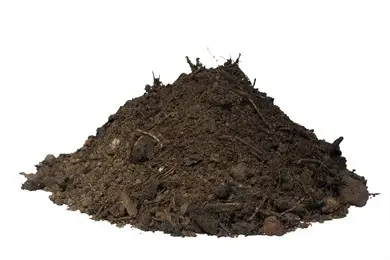

LOAM SOIL
A “loam soil” is one of the most (if not the most) widely and commonly used terms to describe an “all round performer” soil which has excellent fertility and is considered as an ideal soil for cultivation and gardening.
However, it can be further divided into categories like silt loam, clay loam and sandy loam. These categories are based on the proportion of different sized mineral particles found in the loam soil. (Particle size described in clay, silt and sandy section).
In addition to holding nutrients, loam holds water well enough for plant roots to access, yet it drains well so that water doesn’t sit on the roots and rot preventing the roots from rotting.
Additionally to its ability to provide nutrients and water, loam also has a crumbly, loose texture. Sometimes the term “friable” is used to describe this texture. Loose soil enables better aeration of the soil. The supplemental oxygen in the soil is beneficial for root growth. In addition to being well aerated, the friable texture of the soil also enables the roots of the plant to spread out more easily in the soil. This enables them to absorb more nutrients and water.
Soil structure and fertility
In spite of the fact that the mineral content of soil is fixed by its origin, the structural nature is influenced by the presence of stones and gravel as well as by the addition of lime and organic matter.
Fertility and structure of the soil are closely related to its organic matter and fauna. Humus is one of the main components of fertile soils. It is usually understood that the term refers to the actual organic content of the soil, but this is an oversimplification.


Humus is a mixture of compounds that creates a dark colored and sticky substance from decaying organic matter. Humus plays a vital role in the soil as it influences many factors such as soil’s water holding capacity, retention and release of nutrients, and good soil structure.
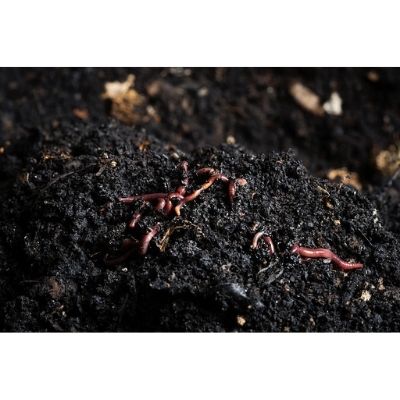

We often take our soil’s diverse range of living organisms for granted, but they are essential to its fertility. As well as the visible centipedes, earthworms, and beetles, these include beneficial bacteria, fungi, and microscopic worms and mites. All these organisms thrive on the organic matter in the soil. They break down the organic matter into humus.
Word such as earthworm and red worms also play a crucial part in the making of compost.
The earthworm is one of the most advantageous inhabitants of fertile soil because of its extensive burrowing, as well as its ability to bring organic matter down from the surface as well as breaking it down by digesting it.►
Plants need a nourishing soil structure to thrive. A soil’s structure is measured by its ability to form crumbs of particles, both mineral and organic, bound together by humus.
Among the factors influencing soil structure are the activities of soil organisms in generating humus and the amount of organic matter available. It is also essential that organisms have the nutrients they need to form humus, as well as lime, which is vital to crumb formation.
Frost and alternating wet and dry conditions are also critical factors for the development of a healthy soil structure. Avoid cultivating in wet conditions or allowing excessive traffic over the surface of the dug trench. Compaction of soil happens at any time, but especially in wet conditions when people walk or move wheeled implements across the surface.
Even continuous winter rain can damage the aeration of the soil impacting the soil structure. You can reduce this damage by laying a layer of organic matter on the surface during winter or by planting a cover crop like green manure. These can be dug up later to maintain soil fertility.
Soil profile
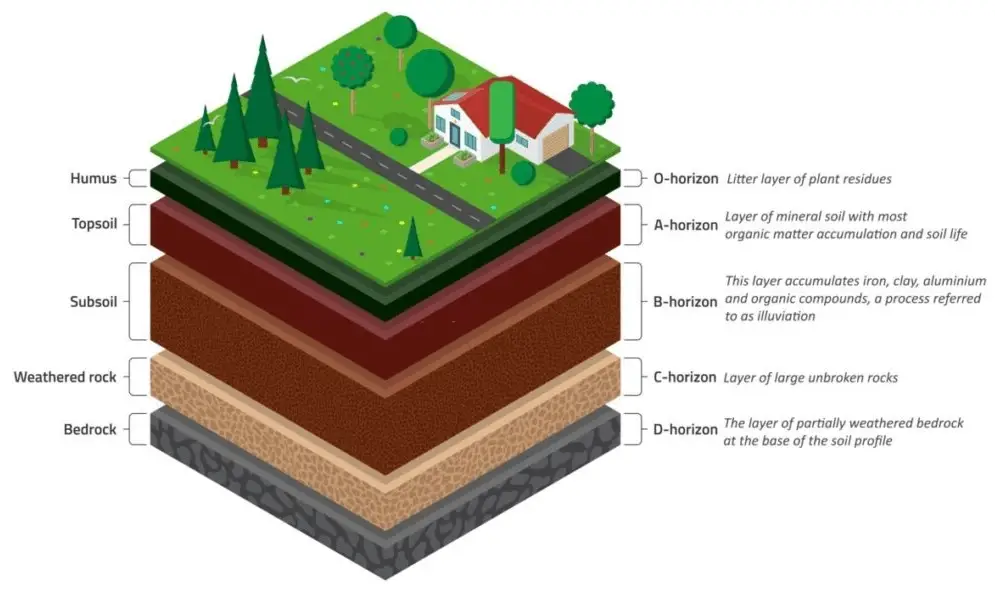

▲ There are distinct layers of soil, including topsoil, subsoil, and parent rock weathered material. Depending on the soil’s history, all of these layers can vary in depth.
A soil profile consists of horizontal bands that can be seen when digging down into the ground. A garden’s topsoil, subsoil, and parent rock material can be easily identified.
As the topsoil contains organic matter and organisms, it is the layer of most activity. Subsoils are typically lighter in color, and are formed from weathered rock. Root penetration through the subsoil and topsoil is crucial for plant growth.
If you want to determine the profile of your site, you should dig a small test hole. For example:
- In general, fruit trees thrive in soils that are well-drained and weathered with a depth of at least 24 inches (60 cm).
- Ideally, sweet cherries need a depth of at least 3 feet (90 cm).
- The soil depth required for soft fruits is at least 18 inches (45 cm), with the exception of strawberries, which can thrive at 15 inches (38 cm), similar to vegetable crops.
An important factor is that water can drain freely regardless of the depth of the profile.
Drainage of soil
For roots to grow and absorb water and nutrients, air is essential. Soil that is waterlogged and deprived of air becomes cold and infertile. A result of this is that the roots of plants become diseased or even die.
A poorly drained garden site can be identified by certain clues. Puddling after rain is one of the most obvious signs. The presence of plants that thrive in wet conditions, such as sedges, rushes, or mosses, is another sign.
Drainage problems can be caused by several factors. Topsoil that lacks humus or is infertile can result in this condition. This problem can be reduced by applying good cultivating/gardening practices and adding organic matter.


As part of the soil profile, there may naturally be an impermeable layer called a pan, which may be as thin as 1 to 2 inches (2.5 to 5 cm). The formation of a pan is caused by the accumulation of minerals, especially iron, in the subsoil. A compaction barrier may also exist in the subsoil or topsoil (as shown on the figure to the right).
The soil profile should be examined to see if free drainage is possible on suspect sites by digging a narrow inspection pit. Natural hard pans and compaction, often indicated by dark horizontal bands, are easily recognizable.
* Read more about Choice and drainage properties of a potting container.
A pickax can be used to breach a natural hardpan and deep double digging breaks up compacted layers.
Other problems are more challenging. This garden might lie in a hollow of natural drainage from surrounding land, or the area might have a naturally high water table. In either of these situations, it might be necessary to grow your crops in raised beds or containers, since they are very difficult to remedy.

